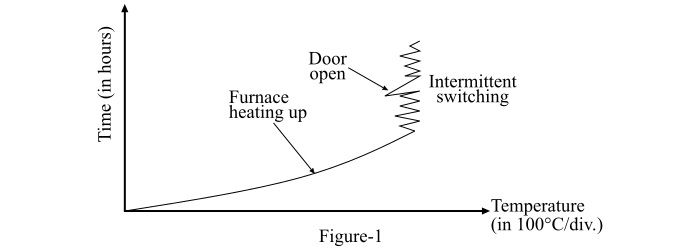
 Data Structure
Data Structure Networking
Networking RDBMS
RDBMS Operating System
Operating System Java
Java MS Excel
MS Excel iOS
iOS HTML
HTML CSS
CSS Android
Android Python
Python C Programming
C Programming C++
C++ C#
C# MongoDB
MongoDB MySQL
MySQL Javascript
Javascript PHP
PHP
- Selected Reading
- UPSC IAS Exams Notes
- Developer's Best Practices
- Questions and Answers
- Effective Resume Writing
- HR Interview Questions
- Computer Glossary
- Who is Who
Temperature Control of Resistance Furnaces
There are various methods to control the temperature of the resistance heating at certain selected points in a furnace or oven, as per certain limits. The temperature control of resistance heating may be required in order to hold the furnace temperature constant or to vary it as per the requirements and it can be carried out manually or automatically.
In case resistance furnaces or ovens, the developed heat is given by,
$$\mathrm{\mathit{H}\:=\:\mathit{I^{\mathrm{2}}Rt}\:=\:\frac{\mathit{V^{\mathrm{2}}}\mathit{t}}{\mathit{R}}}$$
Therefore, the temperature of resistance furnaces can be controlled by any of the following methods −
By intermittent switching or ON-OFF Control
By changing circuit configuration
By varying the applied voltage
By varying number of heating elements
Intermittent Switching
In intermittent switching method, the temperature rise of the resistance furnace can be stopped beyond a desired limit by switching the input supply OFF for some time. Even after switching OFF the input supply, the temperature increases to some extent in a completely enclosed furnace. After some the temperature of the furnace starts decreasing. When the temperature reaches again a predetermined low value, the input supply is again switched ON.

As in this method of temperature control of resistance heating, the entire furnace is switched ON and OFF. Therefore, there is a lot of arcing in at the switching controls. The result of intermittent switching or ON-OFF control on temperature as a function of time is shown in Figure-1.
Variation in Circuit Configuration
By changing the circuit configuration, the temperature of the resistance furnace can be controlled.
In case of three-phase circuits, the heating element will give less heat when it is connected in star configuration whereas it will give more heat when in delta configuration.
In case of single-phase circuits, the change in temperature is achieved by series-parallel grouping of the heating elements.

Variation in Applied Voltage
As from the above equation of heat, it is clear that the change in the applied voltage will change the power dissipation and hence change the temperature of the furnace. There are two methods available for changing the applied voltage as −
When the furnace is supply through a transformer having high voltage primary, then it is advisable to have a tapping control on the high voltage side, as the transformer has lesser magnitude of current on this side. By selecting a suitable primary tapping, voltage across the secondary winding can be increased or decreased resulting the change in temperature of the furnace.
Auto-transformer control - The circuit of the auto-transformer control method for temperature control of resistance furnace is shown in the figure below. This method is used in very small resistance furnaces. In this method, the auto-transformer is used for changing the applied voltage to the resistance furnace and hence for changing the temperature of the furnace.

Variation of Number of Heating Elements
In this method of temperature control of resistance heating, the number of heating elements are changed in the heating circuit. To reduce the temperature, the number of heating elements are decreased and for increasing the temperature, more number of heating elements are used in the supply circuit.

